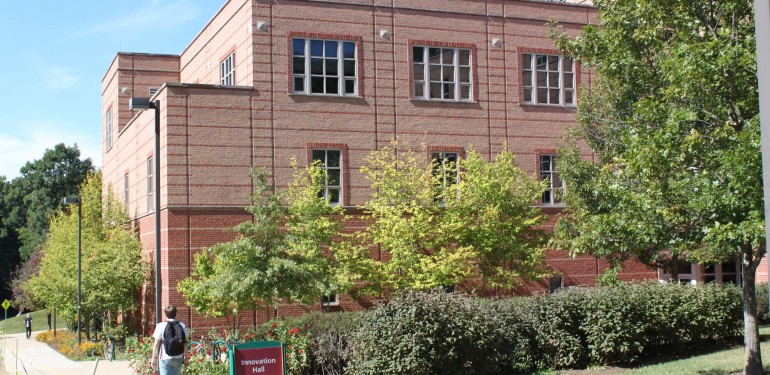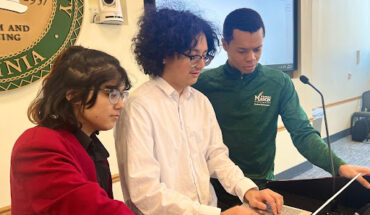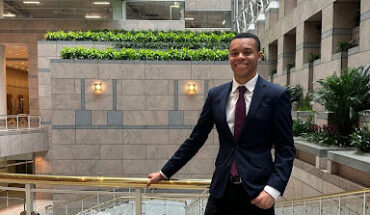Innovation Hall is scheduled to go under renovation in the summer of 2015 as a a step toward one of Mason’s strategic plan goals.
The renovations are part of Mason’s plan to move away from passive learning and toward active learning. According to Director of Division of Instructional Technology Tim Murphy, passive learning includes classrooms with rows and a lecturing professor. This style of teaching leaves students lacking in interaction with their peers, Murphy said.
“In our particular culture, it is difficult to sit across from someone and not at least attempt an introduction, a conversation,” Murphy said. “So the attempt here is to try and make the environment conducive to groups learning rather than as an individual.”
According to the Center for Teaching Excellence’s website, active learning increases student motivation, attendance and mastery of the material.
“Active learning is meant to do more of group work, so that you have round tables and that you have groups and that you have tons of whiteboard around the room and then the teaching style is to do more as a group, rather than someone just lecturing the whole time,” Murphy said.
The project includes several university-wide committees, including Facilities, Department of Instructional Technology and Learning Environments Group.
According to Learning Environments Group Co-Chair Kimberly Eby, the renovated spaces will encourage innovative learning, which is one of the core commitments of Mason’s strategic plan.
“One of the things that we know is that moving forward, as new buildings get built and as we have opportunities to either redesign or refresh technologies in existing buildings, we may not want to replicate what currently exists, we might want to take the opportunity to move forward into thinking about what innovative learning would mean here at Mason,” Eby said.
The renovation project is funded by equipment replacement funds for classrooms. The funds were normally intended to replace existing and aging equipment.
“What if we used this opportunity – where we know we have to replace all the equipment in these rooms to see whether or not we could build something we’re thinking about as a destination space – I mean Innovation Hall, can you imagine? – thinking of it as a destination space, we could do something beyond simply replacing the existing equipment,” Eby said.
Though the classrooms will only be receiving technology updates, the third floor common study areas will be completely redesigned. The new design will include group study rooms, private study spaces and space for students to bring their own computers.
“So what we’ve got is we’ve got a space where we’re really trying to create a blend of formal and informal learning so that the learning spills out of the classroom and stays here, there’s still a lot of energy and collaboration that happens in this space,” Eby said.
The common study space may also include a MakerSpace. According to makerspace.com, a MakerSpace is a place for collaborative and interactive work between groups of people from similar or different fields.
“It’s a student and, primarily student but student and faculty space, where they can be creative, whether they’re in engineering, whether they’re in the arts, whether they’re part of the innovation lab, those kinds of things,” Eby said. “And actually, where interdisciplinary connections can really happen.”
Photo Credit: Amy Podraza




